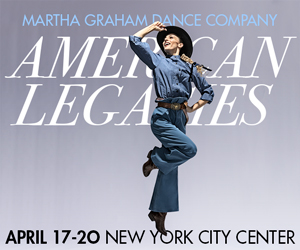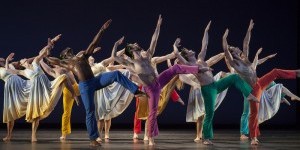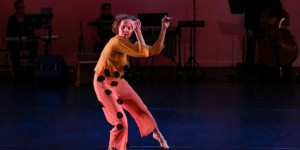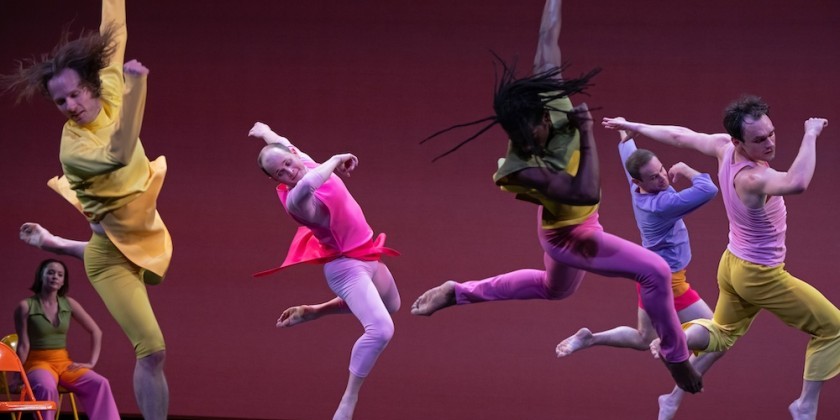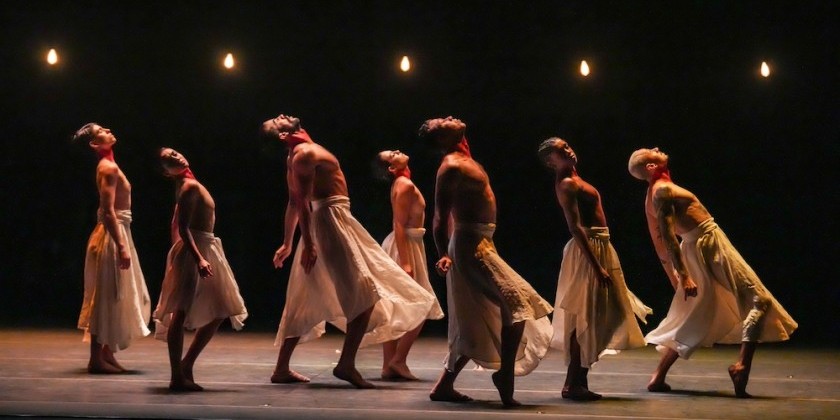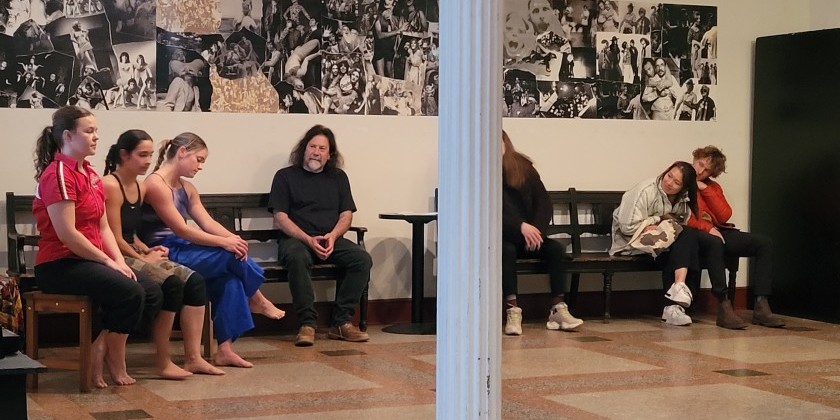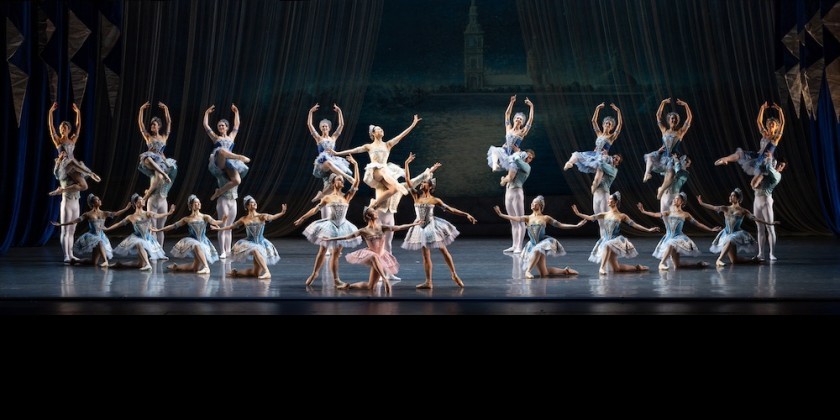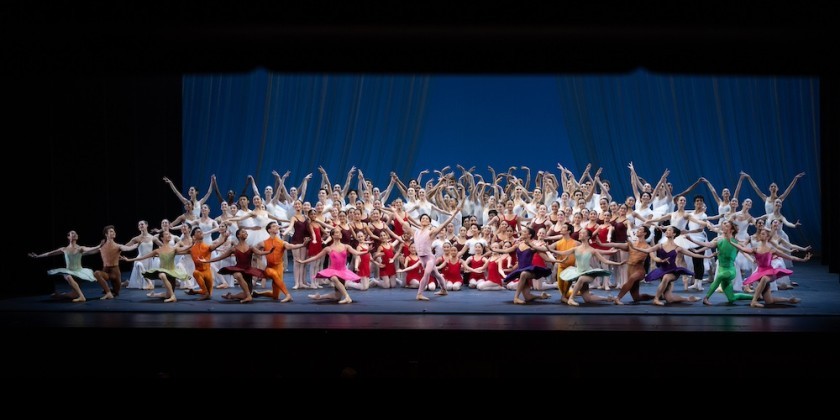Impressions of Fall for Dance at New York City Center- Program 1
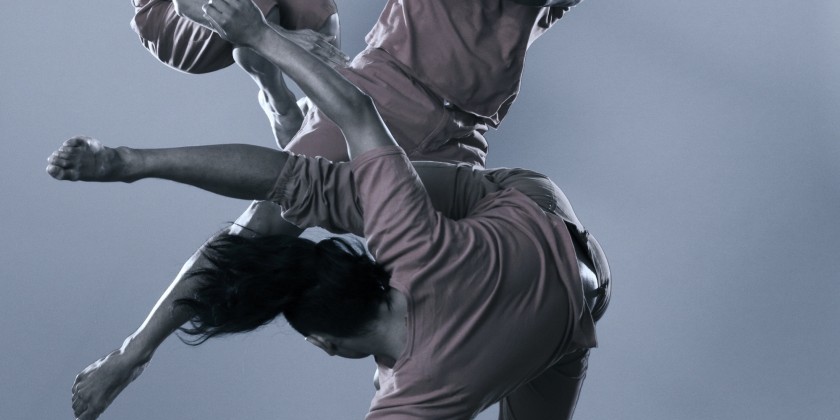
Works by Mark Morris, Russell Maliphant, and Hans van Manen
Program 1 (presented October 8 & 9, watched October 9)
City Center Theater, 131 West 55th Street, NYC
The annual “Fall for Dance” Festival at City Center is a beloved New York institution. Low-cost tickets and a wide variety of dance troupes and styles guarantee a smorgasbord of movement variety. Dance novices can get their feet wet by attending one of the five programs, which allows them to see four different dance companies within one evening. The concept works; the games are on. Now, where is the cake?
Unfortunately, the festival has done away with its bread plan, and it does not include the merriment that ensued following the presentations at a location adjacent to the theater where performers and public celebrated in previous years. That ‘sober’ does not equate with ‘somber’ was evident by the public’s warm to enthusiastic reception of the works, which included a world premiere by the American choreographer Mark Morris.
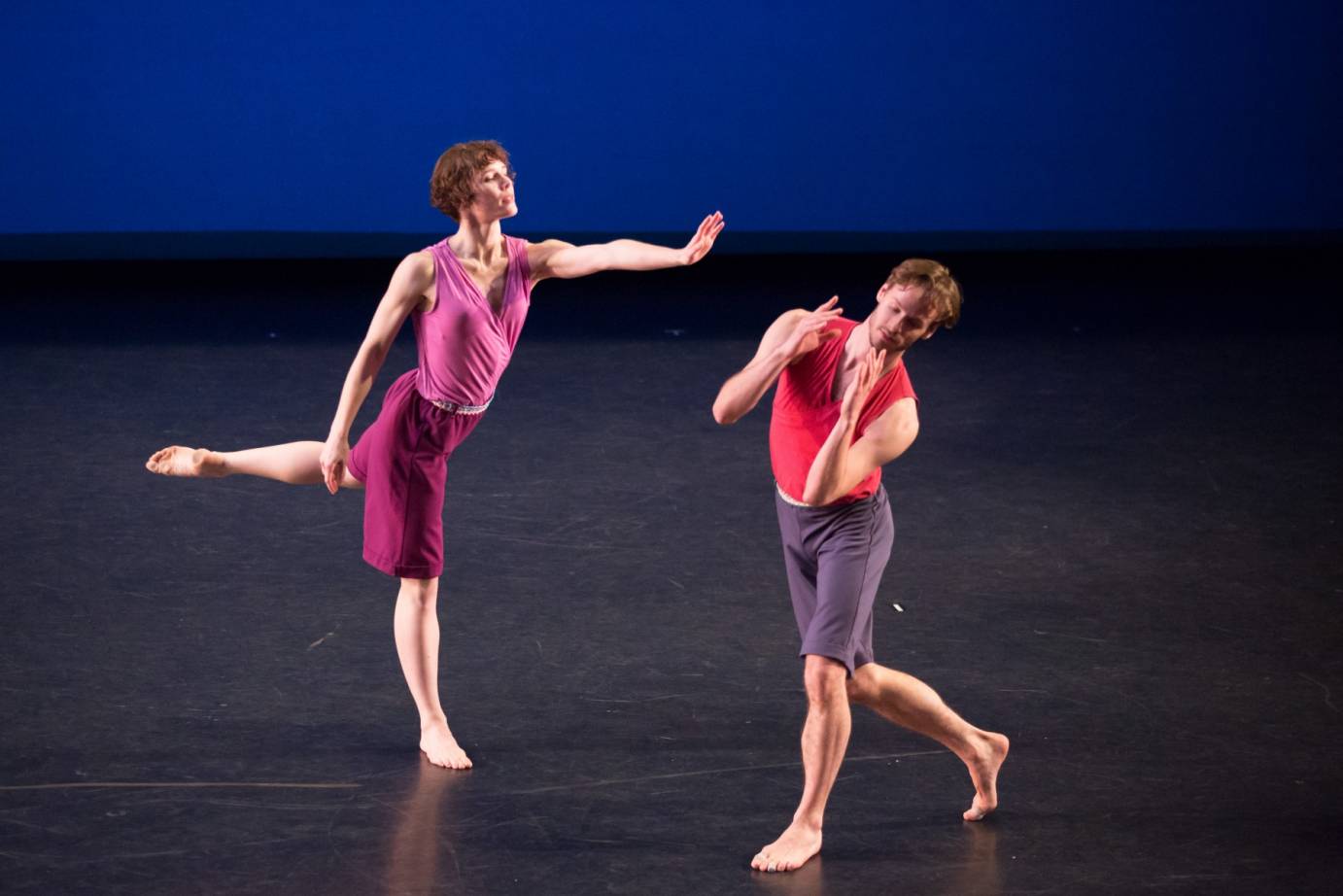
Morris has been in the public eye since 1980, and many American critics, funders, and presenters have given him carte blanche since his auspicious outset by anointing him Master Choreographer. This has allowed Morris to continuously work on a scale that hardly any other living choreographer in the contemporary dance field has (and will) experience.
It is to Morris’ credit that he has been able to produce masterworks for the span of his career — even if not all that has been deemed masterful actually is. His new work, set to ten of Mendelssohn’s “Songs without Words” is simply titled Words. Violinist Georgy Valtchev joins pianist Colin Fowler in some of the songs. I enjoy Morris’ selections. It is as if he created his own suite of Mendelssohn tunes, and his decision to add violin to several provides a more substantial body and richness of sound compared to the original piano solos. Both musicians are excellent, which, as it is worth pointing out, we have come to expect from Morris’ collaborators over the years.
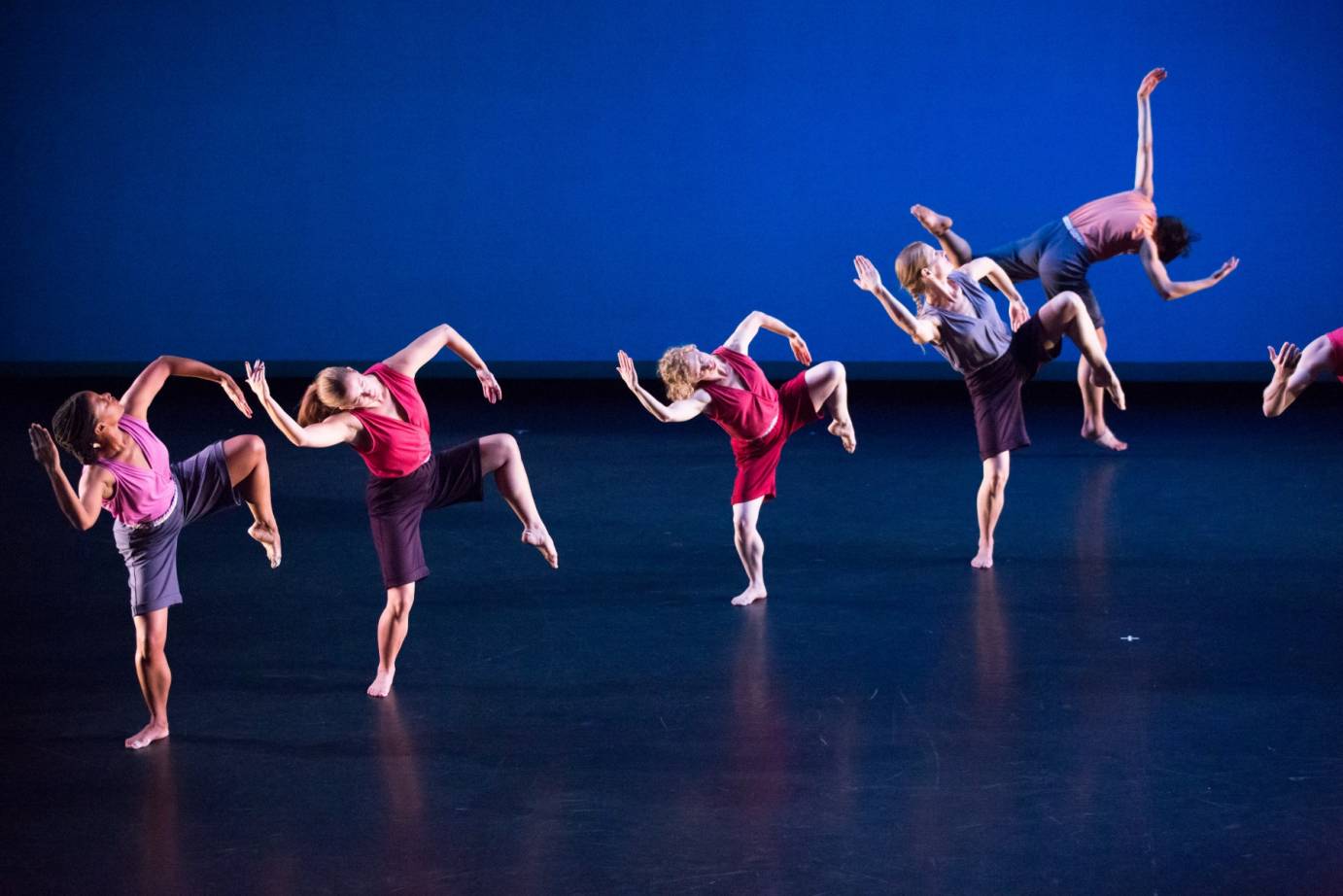
Morris is rooted in music. Words responds to the musical form and motifs. When describing the dance, one cannot get around the desire to illustrate the choreographic juxtaposition of unison and canon movement. A couple starts out doing simple, happy steps side by side at the same time. Before you know it, the theme gets its variation by one person lagging behind the other and emphasizing an up- versus a downbeat. The execution of the identical movement phrase by two people facing different directions adds more textbook variety, yet the lightness and casual wit let the often pedestrian movements come to life. No circus tricks make you hold your breath and want to applaud as is so often the case in dances influenced by the crowd-pleasing idiocy of television dance competitions. In contrast, Morris’ Words is as gentle as it is intricate. The heteronormativity, still so very prevalent across the dance board in big houses, is not perpetuated by Morris. He presents a contemporary society, yet through his choice of music and his adherence to choreographic discipline, he emerges a classicist.
What saves Words from being too sober is its joyous sense of community and the ingenious device of a piece of hanging fabric that is used by some performers to obscure entrances and exits of other dancers. Since the dancers’ feet can be seen, you think you know who will leave and what turn the dance will take, but Morris surprises more often than not. The simplicity of the device is endearing; the sophistication astounding. One could argue that Morris stayed in comfortable territory and chose not to challenge himself or the audience, yet I look forward to exploring the gentle intricacies of Words with many more viewings in years to come.
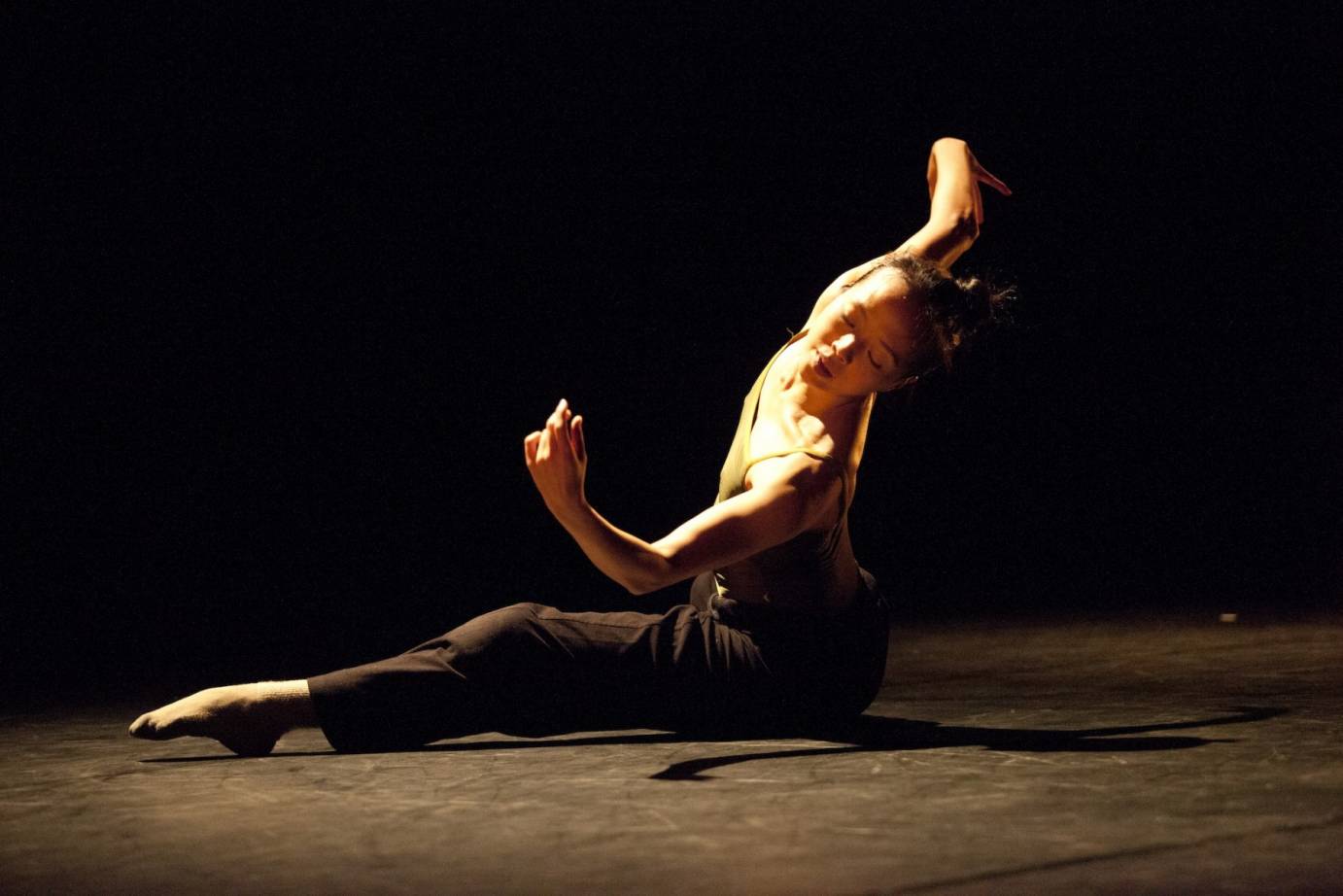
British choreographer Russell Maliphant uses music by favorite Andy Cowton in his Two x Two, a lesson in squares. San Francisco Ballet’s Yuan Yuan Tan is joined by Fang-Yi Sheu. They both move in their separate, defined spaces. The movement seems to be in the categories of unison and non-unison. Does that translate to conformity and individualism? The spatial frames box in the phenomenal dancers, and I wish for more rebellious movement against the oppressive dictatorship of the lighting design. But even the greatest dancers have to fit certain molds. Maliphant does not give answers how he feels about the world he presents.
Before squares, the audience was served triangles by New Zealand’s Black Grace. With percussive exactitude, six bare-chested men slap, jump, squat, clap, and glide in a triangular formation in Minoi: one man downstage, then two in the middle, and three upstage. The outer form barely changes, but it travels through space as a whole. The facing of body directions, the levels, and the dynamics of the individual lines of dancers are in constant flux. Here is another set of performers bound by borders of geometrical form, yet this society is going places and the outcome is not frustrating. Another work, Pati Pati, adds four women, which enlarges the triangle by a line and magnifies the dynamic range. The ensemble should receive an award for precision timing.
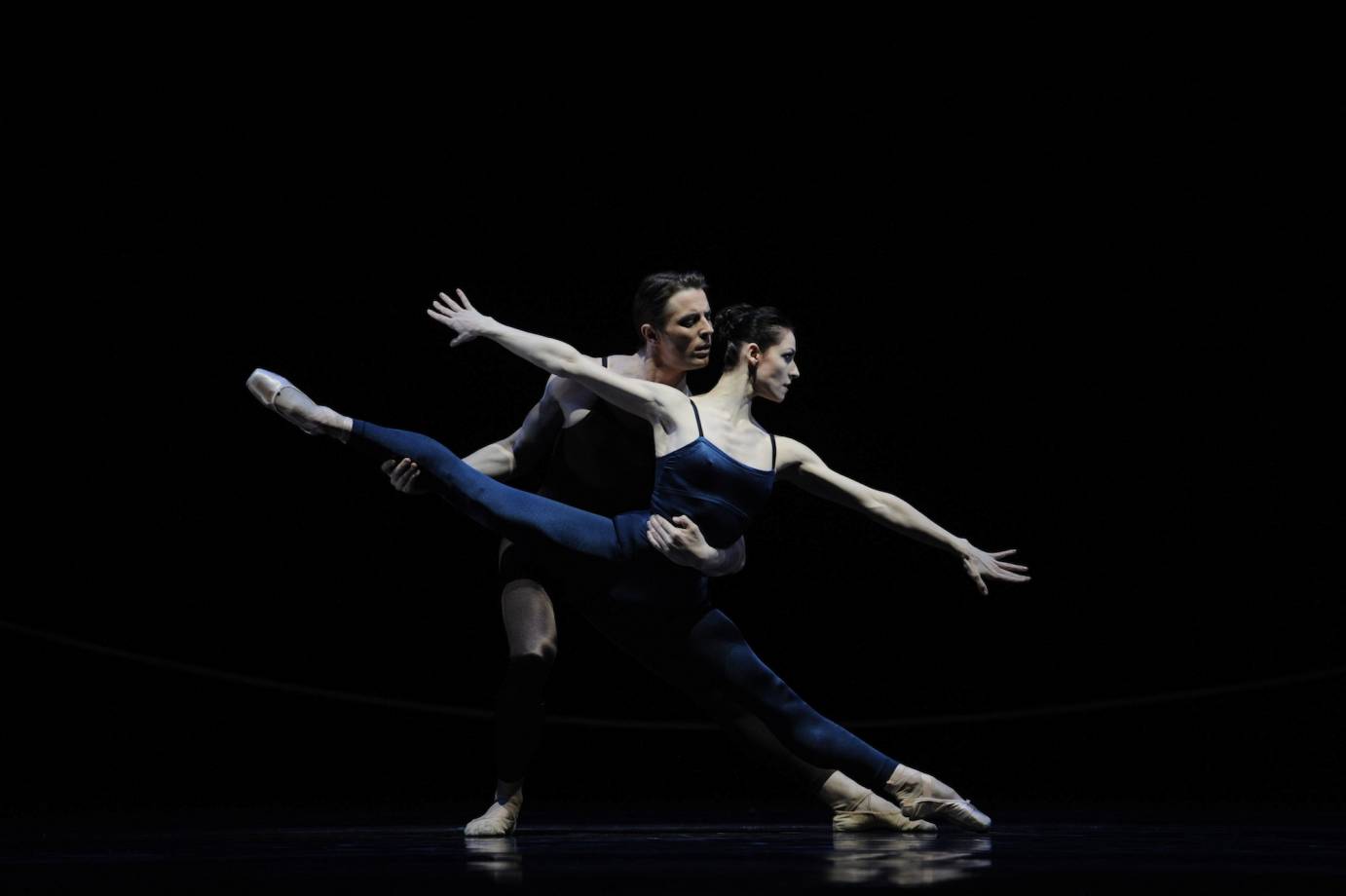
Hans van Manen is an old Dutch master of dance. His Variations for Two Couples for San Francisco Ballet shows astonishingly able bodies that move in a world suffering from emotional cooling. Former New York City Ballet principal Sofiane Sylve and Vanessa Zahorian are partnered by Luke Ingham and Carlos Quenedit. I cannot help but marvel at the ease with which the dancers execute the demands of the choreography. I am grateful for a moment in which Zahorian enters the stage to observe the other couple. That moment of tension is short-lived, and the couples continue going about their beautiful business. I enjoy watching these dancers and I cannot find fault with the proceedings, but I don’t mind when it ends.





